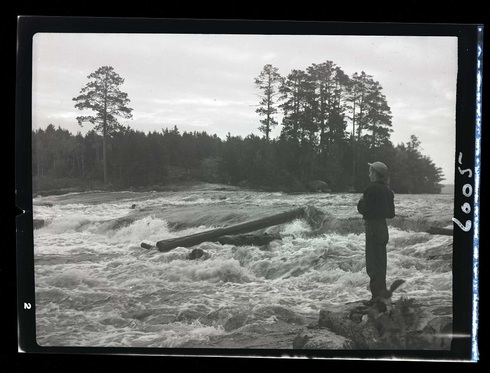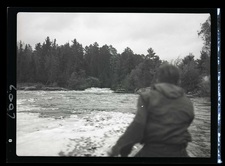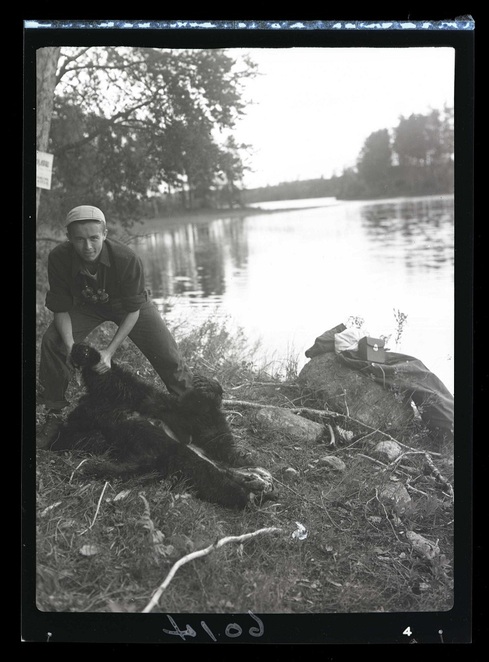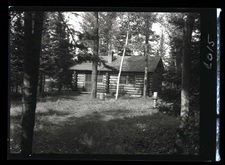 A few months ago, I checked out Walter J. Breckenridge’s autobiography My Life in Natural History, which was published by the Bell Museum in 2009. In the book, the taxidermist and curator (from 1926-1946) and eventual director (from 1946-1970) of the Bell Museum wrote not only of his upbringing, family, and the development of his interest in nature, but also recounted his time spent “in the field” collecting specimens for the museum and conducting research on amphibians and reptiles for his Ph.D. (U of M, 1941).
A few months ago, I checked out Walter J. Breckenridge’s autobiography My Life in Natural History, which was published by the Bell Museum in 2009. In the book, the taxidermist and curator (from 1926-1946) and eventual director (from 1946-1970) of the Bell Museum wrote not only of his upbringing, family, and the development of his interest in nature, but also recounted his time spent “in the field” collecting specimens for the museum and conducting research on amphibians and reptiles for his Ph.D. (U of M, 1941).
Like his mentor, Thomas Sadler Roberts, Breckenridge was never without a still or motion picture camera while in the field. The negatives and reels that he produced while on his field excursions for the museum – as well as when on vacation – are preserved in the Bell Museum of Natural History records at the University Archives.
For almost every story of an encounter with wildlife in the wilderness that Breckenridge recalled in My Life in Natural History there are sets of negatives in the Bell records – created by the author – that match. When brought together, My Life provides the narration for the images that illustrate Breckenridge’s early 20th century explorations of Minnesota’s natural environment.
In the first post of a series that we will call Wednesdays with Walter, we share Breckenridge’s story from Chapter 10 of My Life titled, “Bruce’s Bear,” which recalled a 1944 trip to part of what we know today as the Boundary Waters Canoe Area (BWCA) in northern Minnesota. Thrilled that his nephew Bruce was developing an interest in nature and conservation, Breckenridge planned a canoe trip for the two of them to an area north of Basswood Lake near the Kawishiwi River. They planned to base their trip from the cabin of forest ranger Ed Wolverton, who happened to be the brother of the Bell Museum’s secretary, Ruth Self.
“Required reservations for canoeing there were unheard of at that time, of course, so we simply rented a canoe from an outfitter in Ely and took off with a satisfied feeling that we were going to be, to some extent at least, self-reliant for a couple of weeks. I did not bring along my 16-gauge collecting gun that I usually carried to collect bird specimens for the museum since this was to be simply a fun trip, not officially Museum sponsored travel.
As I recall, we arrived at Ed Wolverton’s cabin on our second day. Since he was situated at a fairly rough rapids in the river, we pulled up to portage our gear. We found Ed at home with his coffee pot on, so we had not only help in portaging our packs and canoe but the opportunity for a very informative chat about conditions there and what was occurring in his work – where the portages were and what we might expect in the way of animal life along the way.”

– Bruce Breckenridge at upper Basswood River falls, September 1944.

“We left his cabin early in the afternoon and drifted quietly, watching for deer or moose until late in the day. We checked our maps and found we would soon encounter a portage over into another lake. Rounding a bend we expected to spot the portage but, on scanning the shore with our binoculars, we saw motion and were a bit annoyed that we were to find another party taking off ahead of us along the portage. However, as we neared the landing, we were really thrilled to find that the motion was not another party but a black bear. We had hoped for some contact with bears possibly nosing about our food packs, but not at a portage landings. We dug deep with our paddles, but before we could get within good viewing range, the bear took off up the portage trail. We almost dumped our canoe in our haste to land and take off after the retreating bear but soon lost sight of it as it turned off into the woods. But even more exciting was the sight of a bear lying dead right at the landing. It was obviously freshly killed, undoubtedly by the other bear…
…we took out our knives and skinned the bear with plans to have it tanned for a rug for Bruce. We salted it lightly with our limited supply of salt and added it to our packs…”

– Bruce Breckenridge at Crooked Lake with bear, September 1944.

“We had another special recollection when we revisited Ed Wolverton on our return trip. As we would expect, he pitched in with portaging our packs, but his eyes opened wide in surprise and puzzlement when we tossed off the bearskin.
‘How on earth did you get this when you had no gun?’ We chose to keep him in the dark for a while with some tales of stabbing it with our knives when the bear attempted to steal our food packs. He took our stories with a “few grains of salt” until we finally came out with the facts. He, of course, registered no objection to our taking it along as a memento of our really memorable canoe trip. Bruce later had the bearskin tanned and still has it as a memento of our much enjoyed expedition.”
